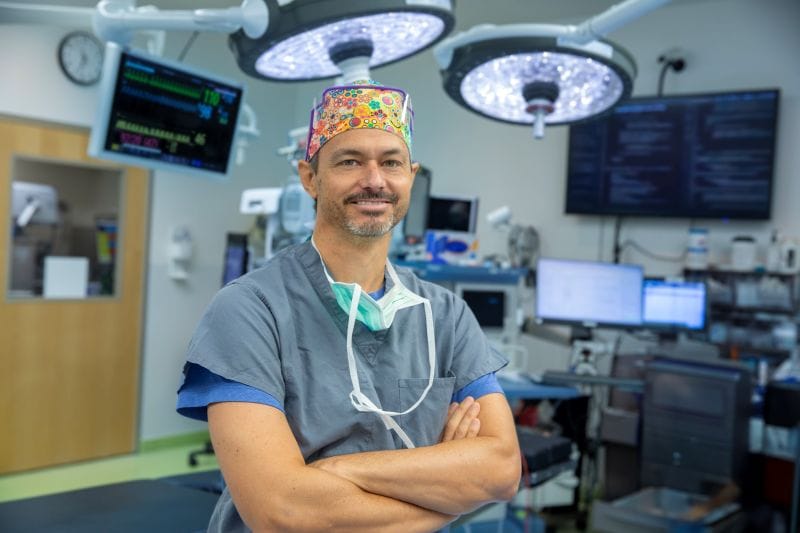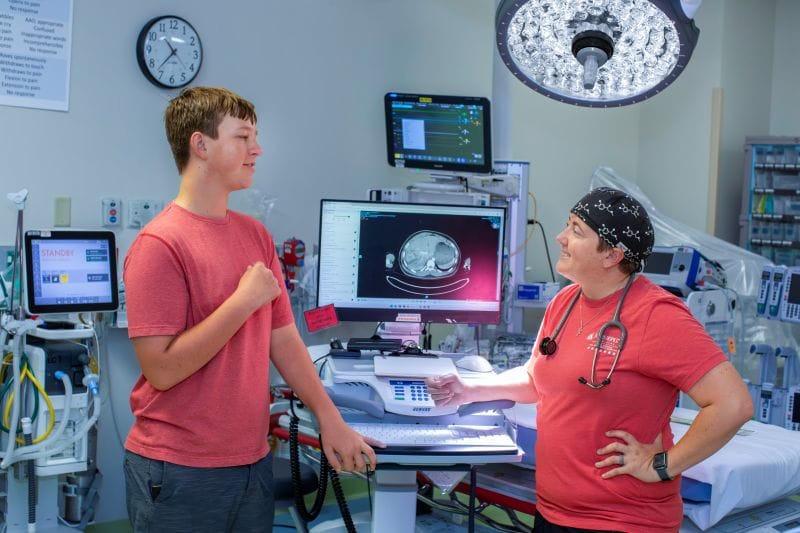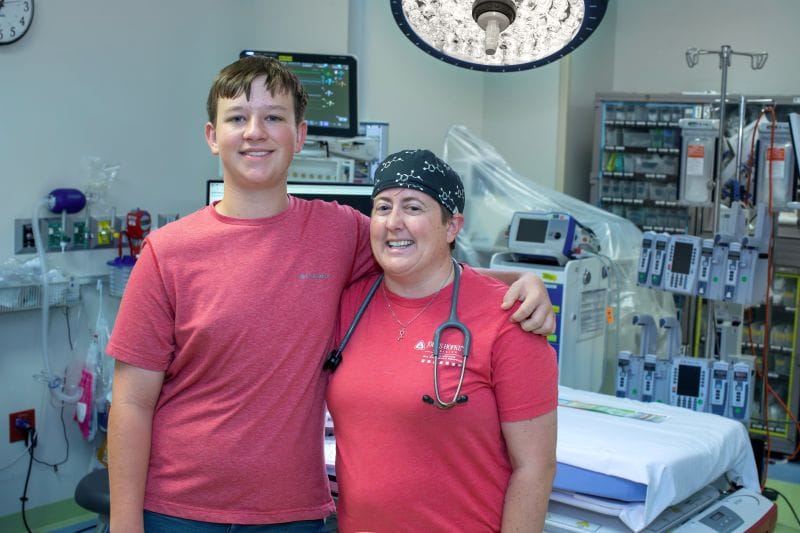An E-Scooter Emergency: Cooper’s Story
It was a call no parent wants to receive. When John’s phone rang, his son, 14-year-old Cooper, was out riding his e-scooter.
“I heard moaning on the phone, then the call dropped,” John recalls. “I turned around immediately and headed to where he was supposed to be.”
He found Cooper badly injured after a fall on a brick road. “He hit a bump, and it threw him off,” John says. “He had facial road rash, cuts on his hands, arms and chin.”
The most serious injury, though, was internal.
“The way he landed, the handlebar hit him perfectly in his liver,” says John.
They rushed to a nearby emergency facility, where doctors quickly identified a severe liver laceration. That’s when Johns Hopkins All Children’s Hospital was contacted. Pediatric emergency medicine physician Meghan Martin, M.D. took the call.
“Freestanding ERs don’t have the resources we do,” explains Martin. “They said, ‘We have a child with a liver laceration we’d like to transfer,’ and I said, ‘Absolutely.’”
Cooper arrived to a ready team. The emergency center has seen an uptick in e-scooter and e-bike injuries. He was visibly in pain, with shoulder aches — a symptom of referred pain from liver trauma.
The pediatric trauma team led by Christopher Snyder, M.D., MSPH, FACS, FAAP was brought in.

“Injuries to solid organs like the liver and spleen can cause life-threatening internal bleeding,” Snyder explains. “Intestinal injuries may not be apparent right away, but can progress over time and turn into sepsis. We have to strike a delicate balance: to identify and treat the injuries appropriately, but at the same time, to not subject children to extra radiation or invasive procedures unnecessarily.”
Cooper’s vital signs were stable, but blood tests showed elevated liver enzymes, confirming the injury. Doctors monitored his clotting levels, concerned about the liver’s role in producing clotting factors.
John stayed by his side, anxious and helpless. “It was the worst feeling in the world,” he says.
Cooper remained hospitalized for seven days. “They ran bloodwork, did scans and monitored him closely,” says John. After a week, he was stable enough to go home, but faced another seven weeks of recovery — and six months before being fully healed.
“It feels amazing to help kids and see them walk out without needing surgery,” Martin says. “Cooper’s excited about his future — football, school, even joining the Navy. It’s rewarding to be part of that.”

As for the e-scooter? It’s officially retired after being Cooper’s one and only Christmas gift last year.
“I used to ride it myself,” John admits. “I’ve fallen too … not as bad, but enough to see how sketchy they are. I’m leaning toward a regular bike now.”
Martin advises parents to think twice.
“These are more like motorcycles than bikes. Under 16 years old really shouldn’t be on them. And if they are, helmets, closed-toe shoes and protective gear are a must.”
Presented by Johns Hopkins All Children's Hospital
More from Johns Hopkins All Children Hospital:


